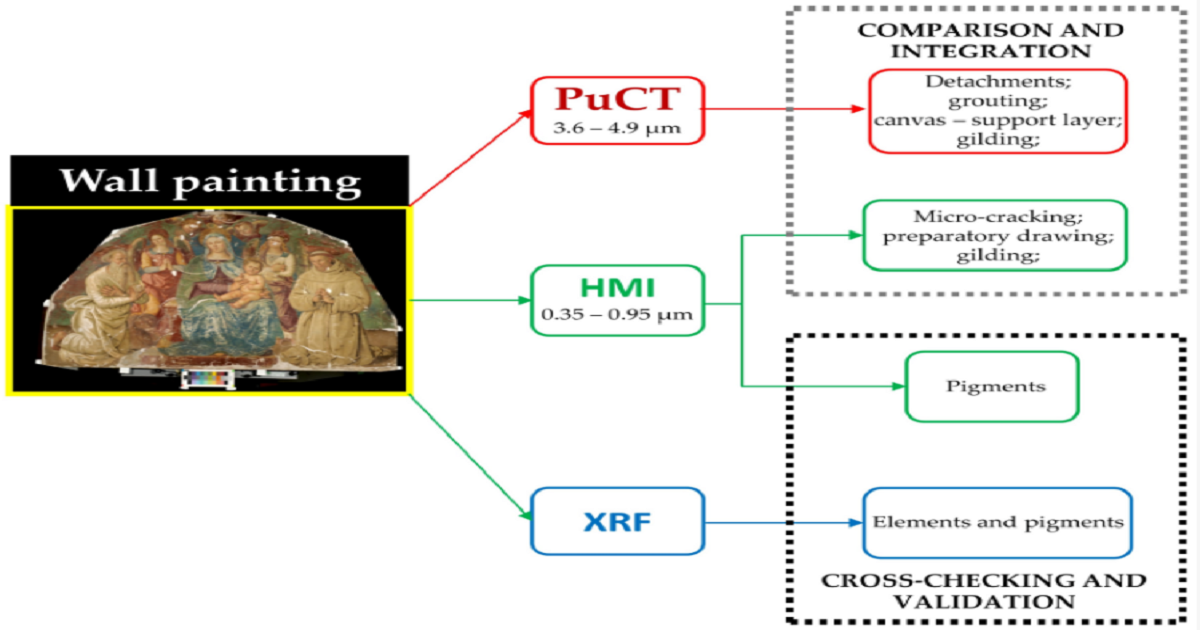Surface and Interface Analysis of Cultural Heritage, 2nd Edition
A special issue of Coatings (ISSN 2079-6412). This special issue belongs to the section "Thin Films".
Deadline for manuscript submissions: closed (30 August 2025) | Viewed by 10046

Special Issue Editor
Interests: spectroscopy; materials for cultural heritage; wood coatings; conservation materials; innovative materials for cultural heritage; multispectral imaging for cultural heritage; coatings for stones
Special Issues, Collections and Topics in MDPI journals
Special Issue Information
Dear Colleagues,
We would like to invite you to submit your work to this Special Issue on "Surface and Interface Analysis of Cultural Heritage". Surface and interface analysis are fundamental in cultural heritage (CH) to understand the mechanisms that underlie alterations and consequently to find the most suitable treatment to avoid them. This last issue is particularly relevant in CH because surface treatments are commonly applied to different kinds of artifacts and materials to protect, restore, preserve, and recover aesthetic characteristics. Several commercials formulates are used for these aims, but their interactions with the original materials of artworks and their possible modifications over time have not often been investigated. This could have undesirable effects on surfaces, such as chemical alterations and color modifications, that clearly need to be avoided. So, it is fundamental in CH to know the surface and interface properties of the materials that constitute artworks both untreated and treated with different kinds of finishes.
The aim of this Special Issue is to present the latest developments in the field through a combination of research papers, communications, and review articles from leading groups around the world that work on the surface and interface properties of CH materials and artworks.
Case studies are also welcome. These should report on the monitoring of surface treatments in cultural heritage that have a prominent role in conservation, constituting valuable knowledge in the case of future interventions.
The Special Issue will serve as a forum for papers in the following topics:
- Theoretical and experimental research, knowledge, and new ideas in CH surface and interface analysis to help us understand protective and preventive coating mechanisms.
- Recent developments in multi-functional organic, inorganic, and hybrid coatings.
- Experiments on coating performance with exposure to high temperatures, high stress, and other extreme environmental conditions.
- Understanding the degradation mechanisms of coatings through different spectroscopic techniques combined with mechanical tests.
- The latest advancements in test methods considering the interplay between mechanical and chemical interactions and the ability to predict performance and/or reliability.
- Innovative non-invasive techniques to investigate surface and interface characteristics.
- Computer modeling or simulations to predict coating properties, performance, durability, and reliability in service environments.
Dr. Claudia Pelosi
Guest Editor
Manuscript Submission Information
Manuscripts should be submitted online at www.mdpi.com by registering and logging in to this website. Once you are registered, click here to go to the submission form. Manuscripts can be submitted until the deadline. All submissions that pass pre-check are peer-reviewed. Accepted papers will be published continuously in the journal (as soon as accepted) and will be listed together on the special issue website. Research articles, review articles as well as short communications are invited. For planned papers, a title and short abstract (about 100 words) can be sent to the Editorial Office for announcement on this website.
Submitted manuscripts should not have been published previously, nor be under consideration for publication elsewhere (except conference proceedings papers). All manuscripts are thoroughly refereed through a single-blind peer-review process. A guide for authors and other relevant information for submission of manuscripts is available on the Instructions for Authors page. Coatings is an international peer-reviewed open access monthly journal published by MDPI.
Please visit the Instructions for Authors page before submitting a manuscript. The Article Processing Charge (APC) for publication in this open access journal is 2600 CHF (Swiss Francs). Submitted papers should be well formatted and use good English. Authors may use MDPI's English editing service prior to publication or during author revisions.
Keywords
- cultural heritage
- conservation
- surface treatments
- protective coatings
- non-invasive stratigraphic methods
- spectroscopic techniques
- computer modeling
- test methods
Benefits of Publishing in a Special Issue
- Ease of navigation: Grouping papers by topic helps scholars navigate broad scope journals more efficiently.
- Greater discoverability: Special Issues support the reach and impact of scientific research. Articles in Special Issues are more discoverable and cited more frequently.
- Expansion of research network: Special Issues facilitate connections among authors, fostering scientific collaborations.
- External promotion: Articles in Special Issues are often promoted through the journal's social media, increasing their visibility.
- Reprint: MDPI Books provides the opportunity to republish successful Special Issues in book format, both online and in print.
Further information on MDPI's Special Issue policies can be found here.
Related Special Issue
- Surface and Interface Analysis of Cultural Heritage in Coatings (7 articles)





